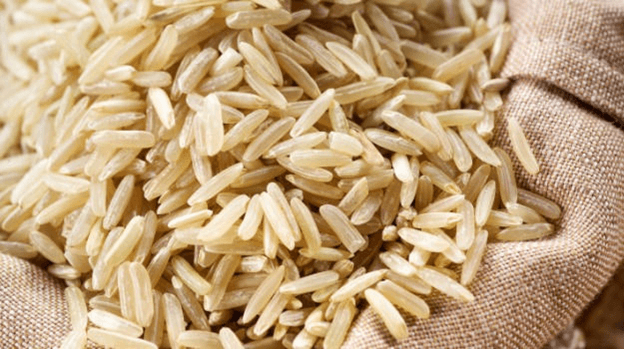
Rice is a food grain which is a staple ingredient of the diet of over half the population of the world. Because it is so versatile and adaptable to any seasoning or flavor, it is a much-valued ingredient of all types of cuisines. Also, its chewiness and soft texture contribute to the attractiveness of meals and suitability to many kinds of meal plans.
Many types of rice are cultivated around the world. Based on the size of seeds, rice can be short grain, medium grain, or long grain. Basmati rice from the Indian subcontinent is a popular variety of long grain rice. Risotto or sticky rice is a type of short-grain rice.
Every type of rice is whole grain rice, which is brown because of bran content while white rice is processed and refined by removing bran. White rice is produced by a pearling process in which grain passes through a machine in which it is rolled and bran is removed, leaving intact, the white kernel. Thus, the white rice is a refined and processed variety and is not anymore a whole grain. This pearling process increases the shelf-life of the grain and reduces cooking time.
Rice has also high nutritional content:
1 cup cooked rice (186 gm) contains:
- Fat-0.2 gm
- Sodium-0%
- Cholestrol-0%
- Potassium-2%
- Dietary fiber-2%
- Sugar-0 gm
- Proteins-4.4 gm
- Carbohydrtaes-18%
- Iron-34%
All types of rice being starchy are a rich source of carbohydrates. So, one must consume it in careful portions so as to reduce carbs in your diet. One ideal portion is one fourth a plate or a fist-full. Also, wherever possible choose brown rice as it contains more vitamins, fiber, and minerals. Wild rice is also preferable for its high fibre content.
Health Benefits of Rice:
Based on the type of rice, rice can serve as a great source for vitamins like Riboflavin, Niacin, Thiamine, Fibre, and Iron. It is also a good source of magnesium and manganese.
Thiamine is a B-vitamin which helps with the metabolism of carbohydrates. Magnesium is a component of bones that catalyses hundreds of reactions of enzymes, involved in the synthesis of proteins and DNA. It is needed for proper muscle contraction and nerve conduction. Manganese is a source of antioxidant enzymes which help in the metabolism of proteins and carbohydrates.
Brown rice contains more vitamins and fiber than ordinary rice. Apart from Magnesium and Thiamine, brown rice contains selenium, which helps in thyroid functioning and is vital in providing anti-oxidant enzymes. Brown rice also contains more fiber.
Different Types of Rice:
Long grain rice: this includes the best extra long grain Basmati rice. This rice is aromatic and fluffy when cooked. Another unique long grain rice is wild pecan rice which has a rich aroma and nutty flavor.
Short grain rice:
An example is Risotto. This rice has a higher glycaemic index than normal rice- this raises blood sugar levels in comparison to other rice. Risotto is also called as Arboriorice and is a white colored short-grain rice with a mild flavor. It is commonly used in Italian cuisine.
Another short-grain rice is sticky rice popular in Asian cuisine. This rice is known as sweet rice or glutinous rice. It is milled into flour and utilized for dumplings. It is also used for making Japanese Sake (wine) and rice vinegar.
Wild rice:
Mostly found in form of whole grain, it has a nutty flavor and is the seed of an unrelated aquatic plant. It is used commonly like a side dish and contains more minerals, vitamins and fiber than white varieties.
These are some aspects of the versatile food that is rice.